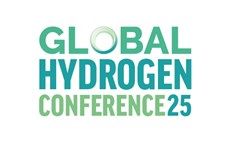Greener on every side
Published by Poppy Clements,
Assistant Editor
Global Hydrogen Review,
This shift has created a new energy value chain with massive potential, but only for the producers and providers who can successfully navigate the full value of the hydrogen process from end-to-end.
The value chain for green hydrogen generation and consumption is complex. To manufacture green hydrogen, organisations must harness renewable energy from solar, wind, hydroelectric, and other sustainable power sources. This green hydrogen must then be transported and stored, requiring precise operations and the right containment systems. Finally, stored hydrogen must be distributed to an end user or industrial process, such as a power generation plant with hydrogen-capable turbines, where it is used to produce electricity.
Because this value chain is not yet proven, it comes with great risk, but there are potentially great rewards. Yet, even with all of the unknowns, innovators can build a robust foundation for the best outcomes when navigating this new arena of green energy opportunity, while significantly reducing risk, by employing the following essential strategies:
- Implementing an open, unified control platform across the value chain.
- Leveraging the data from a unified platform in powerful, high-fidelity simulation tools.
- Taking advantage of comprehensive guidance from industry automation experts.
These strategies will help companies to build, refine, and scale end-to-end green hydrogen solutions more quickly and successfully in order to drive increased return on investment (ROI) and capture competitive advantage.
Utilise a single, cohesive, open control platform
Building and maintaining a facility or fleet based on new technologies is complicated, but basing the end-to-end technology on a wide variety of different platforms dramatically increases that complexity. In fact, the complexity resonates across a wide array of areas, including engineering and design of processes, operations, training, innovation and scalability, and more. Multiple different systems must be connected, which typically require multiple engineered interfaces. When anything needs to change, those interfaces must be updated or re-engineered to ensure that there are no problems in data conversion.
In contrast, implementing a single, common solution across the entire value chain creates a platform for operational efficiency. First and foremost, the best automation platforms are built with native communication and validation of connectivity. With this type of architecture, multiple control systems across different facilities can communicate with devices and each other, with no need for custom-engineered interfaces.
Written by Lauren Wherry, Emerson.
This article was originally published in the Autumn 2023 issue of Global Hydrogen Review magazine. To read the full article, simply follow this link.
Read the article online at: https://www.globalhydrogenreview.com/hydrogen/04102023/greener-on-every-side/
You might also like
HDF Energy and ABB collaborate on hydrogen fuel cells
HDF Energy and ABB have collaborated to develop a multi-MW hydrogen fuel cell system, accelerating the decarbonisation of heavy maritime transport.


